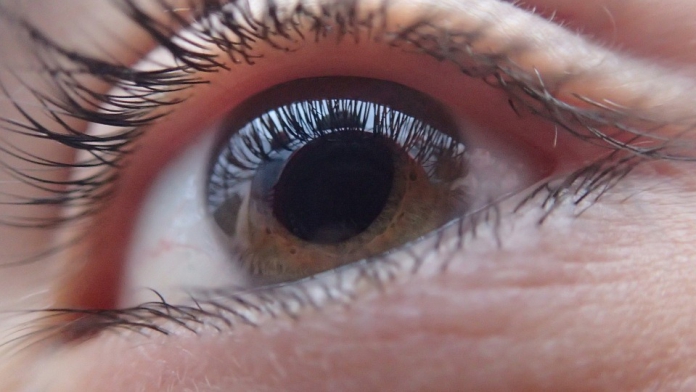What is Glaucoma?
According to the International Glaucoma Association, Glaucoma is the name given to a group of eye conditions in which the main nerve to the eye (the optic nerve) is damaged that leads to vision loss.1 This nerve carries information about what is being seen from the eye to the brain and as it becomes damaged, vision is lost. This results in misty and patchy vision, with eventual loss of central vision, although this is rare.
Glaucoma is becoming an increasingly prevalent cause of blindness, as the world’s population ages. New statistics gathered by the World Health Organisation (WHO) in 2002, show that glaucoma is now the second leading cause of blindness globally, after cataracts.2
It has been estimated that by 2020 there will be approximately 80 million people with glaucoma, an increase of about 20 million since 2010. Furthermore, it is thought that at present over 8 million people are bilaterally blind due to glaucoma, a figure that is set to rise to over 11 million by 2020 with the increasing prevalence, unless improved screening and effective treatment strategies are successful.3
There are four main types of glaucoma: primary open angle glaucoma, primary angle closure glaucoma, secondary glaucoma and developmental glaucoma.1
Primary Open Angle Glaucoma (POAG) is the most common form of glaucoma in which the damage is usually caused by too much pressure within the eye (the intraocular pressure or IOP). The reason for the rise in pressure is usually due to poor drainage of fluid out of the eye which is required for the healthy function of the eye. The increased pressure damages the optic nerve (the nerve of sight) by reducing the amount of blood that can get through the tiny blood vessels that supply to the nerve and also by compressing the nerve itself.1
How to detect Glaucoma?1
Early detection is key to managing and minimizing the effects of glaucoma. Hence, regular check-ups are recommended especially as the senior years ensue. Some symptoms of glaucoma include hazy vision, pain in the eye and/or head, nausea or vomiting, the appearance of rainbow-coloured circles around bright lights, and in extreme cases, sudden loss of sight.
Although any vision which has been lost to glaucoma cannot be recovered, early diagnosis, careful monitoring and regular treatment allows the vast majority of glaucoma patients to retain useful sight for life. The only way to know if you have glaucoma is to have your eyes checked at your local ophthalmologist. The three common tests are:
- Ophthalmoscopy: Looking at the appearance of the main nerve in the eye(optic nerve)
- Tonometry: Measuring the pressure in the eye
- Perimetry: Checking the field of vision
Treatment of Glaucoma1
The majority of people with glaucoma will be treated with eye drops. If eye drops are not successful in lowering the eye pressure, laser or surgical treatment for glaucoma may be needed.
Challenges in Glaucoma Treatment
There are several challenges in glaucoma management. Patients at a more advanced stage usually require more than one medication to control their IOP and keep their condition in check. Multi-drug regimens for glaucoma pose several significant clinical challenges: 1) it may negatively affect patient adherence (The extent to which a patient continues an agreed-on mode of treatment without close supervision), 2) reduced effectiveness due to the washing out of earlier medications when later medications are administered, 3) exposure to preservatives.4
Patient adherence to treatment is crucial for achieving good IOP control and slowing the progression of the disease. Unfortunately, studies have demonstrated that adherence is often below optimal standard5,6. Study has demonstrated that while 49 % of patients using one medication for the treatment of glaucoma were compliant, only 32 % of those using a combination of two medications were7. The more medications we prescribe for one patient, the higher the chances of non-adherence. Failure to achieve treatment outcomes due to poor adherence may lead to a perceived lack of efficacy and unnecessary changes in treatment regimen.8
Unmet needs in glaucoma treatment
Factors associated with the medication itself, such as side effects and complicated regimens, are known to adversely affect adherence.9 Glaucoma patients frequently develop side effects due to long-term exposure to preservatives in the eye drops (commonly known as benzalkonium chloride (BAK)). Although only trace amounts exist in each dose, prolonged exposure from multiple daily doses of eye drops from multiple glaucoma medications can lead to disorders of the surface of the cornea—the transparent layer that forms the front of the eye or more commonly known as ocular surface disease (OSD) and increased risk of surgical failure.10,11
Why go preservative-free?
Ocular surface disease (OSD) is a frequent complication caused and/or exacerbated by the chronic use of topical anti-glaucoma medication which contain preservatives. Its overall prevalence ranges from 22‒78% depending on the method of clinical evaluation, with the number preservative-containing eye drops positively correlating to ocular surface damage.12 It stands to reason that the risk for developing OSD would be reduced if preservative-containing eye-drops were substituted with preservative-free eye drops. The European Medicines Agency suggests avoiding preservatives in two groups of patients: (1) those who are unable to tolerate eye drops with preservatives and (2) in those requiring long-term treatment.4
Renewed hope in a new formulation
A preservative-free (PF) fixed-combination (FC) anti-glaucoma formulation with once-a-day dosing addresses two major barriers that affect adherence in long-term glaucoma treatment: (1) it eliminates side effects caused by prolonged exposure to preservatives and (2) it simplifies the treatment regimen.
References:
1) International Glaucoma Association. https://www.glaucoma-association.com/about-glaucoma/ [accessed 22 August 2017].
2) World Health organization. http://www.who.int/bulletin/volumes/82/11/feature1104/en/ [accessed 22 August 2017].
3) The International Agency for the Prevention of Blindness. https://www.iapb.org/knowledge/what-is-avoidable-blindness/glaucoma/ [accessed 22 August 2017]
4) European Glaucoma Society. Terminology and Guideline for Glaucoma 4th Edition. Italy: PubliComm;2014.
5) Kass MA, et al. Compliance with topical pilocarpine treatment. Am J Ophthalmol 1986,101:515-23.
6) Kass MA, et al. Compliance with topical timolol treatment. Am J Ophthalmol 1987;15;103:188-93.
7) Patel SC, Spaeth GL. Compliance in patients prescribed eyedrops for glaucoma. Ophthalmic Surg. 1995 MayJun;26 (3):2336.
8) Robin A, et al. Compliance and Adherence in Glaucoma management. Indian J Ophthalmol 2011;59(Suppl 1):S93-S96.
9) Schwartz GF, et al. Adherence and persistence with glaucoma therapy. Surv Ophthalmol 2008;53 Suppl 1: S57-68.
10) Buron N, et al. Differential mechanisms of conjunctival cell death induction by ultraviolet irradiation and benzalkonium chloride. Invest Ophthalmol 2007;17:34-9.
11) Rasmussen CA, et al. Benzalkonium chloride and glaucoma. J Ocul Pharmacol Ther 2014;30:163-9.
12) Leung EW, et al. Prevalence of ocular surface disease in glaucoma patients. J Glaucoma 2008:17:350-55.
13) Tapcom®-S Malaysia Product Insert. DATE OF REVISION OF THE TEXT: 22 March 2017
14) Holló G et al., Fixed-Dose Combination of Tafluprost and Timolol in the Treatment of Open-Angle Glaucoma and Ocular Hypertension: Comparison with Other Fixed-Combination Products. Adv Ther, 2014;31:932-944
This article is courtesy of Santen Pharma Malaysia in conjunction with the upcoming World Sight Day.
Read also: Celebrate World Sight Day | 5 Eye Exercises To Improve Your Vision









